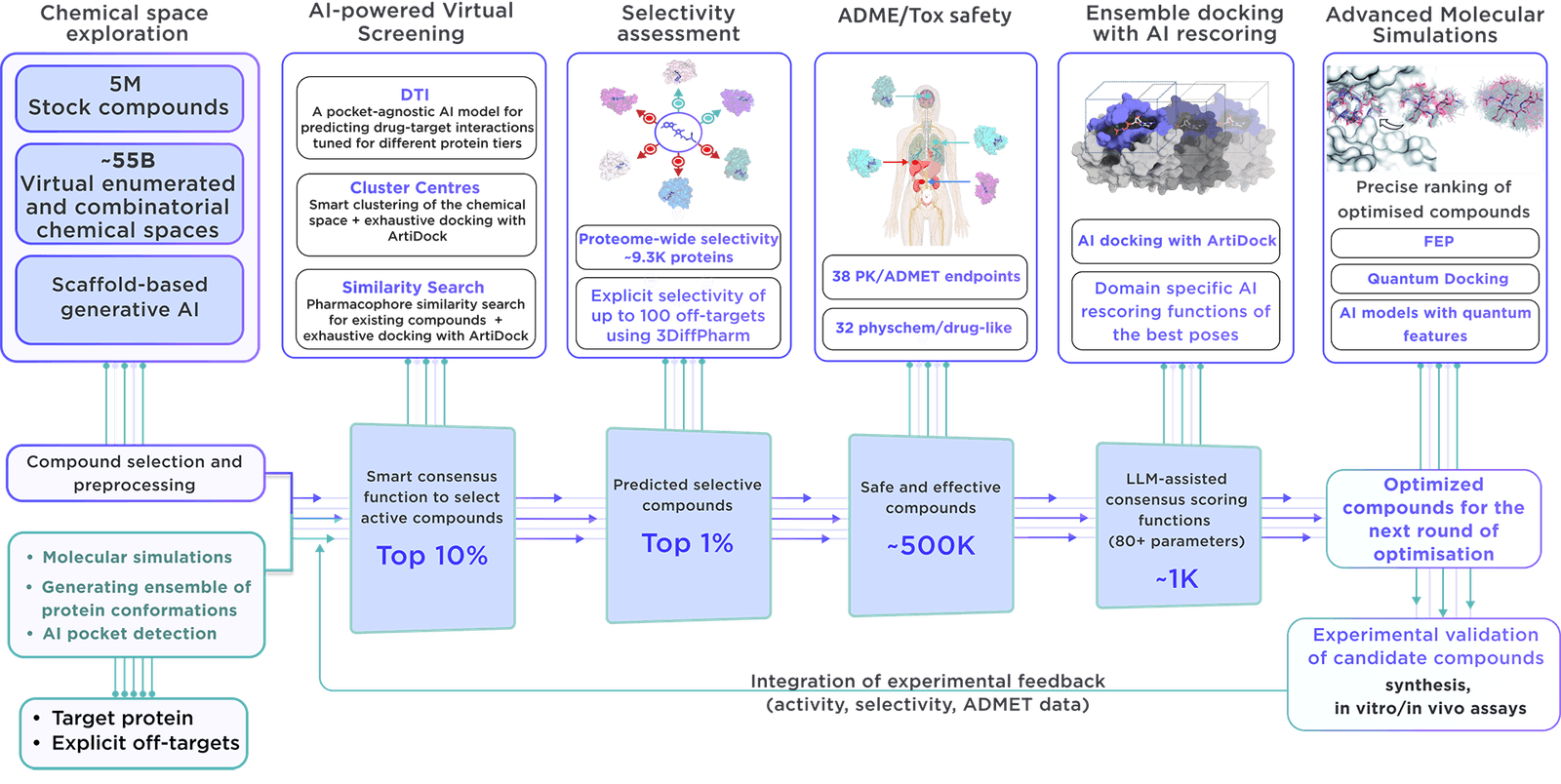Focused On-demand Libraries - Receptor.AI Collaboration
Explore the Potential with AI-Driven Innovation
This extensive focused library is tailor-made using the latest virtual screening and parameter assessment technology, operated by the Receptor.AI drug discovery platform. This technique is more effective than traditional methods, offering compounds with improved activity, selectivity, and safety.
From a virtual chemical space containing more than 60 billion molecules, we precisely choose certain compounds. Reaxense aids in their synthesis and provision.
The library features a range of promising modulators, each detailed with 38 ADME-Tox and 32 physicochemical and drug-likeness parameters. Plus, each compound is presented with its ideal docking poses, affinity scores, and activity scores, ensuring a thorough insight.
We use our state-of-the-art dedicated workflow for designing focused libraries for enzymes.
The method includes detailed molecular simulations of the catalytic and allosteric binding pockets, along with ensemble virtual screening that considers their conformational flexibility. In the design of modulators, structural changes induced by reaction intermediates are taken into account to enhance activity and selectivity.
Several key aspects differentiate our library:
- Receptor.AI compiles an all-encompassing dataset on the target protein, including historical experiments, literature data, known ligands, and structural insights, maximising the chances of prioritising the most pertinent compounds.
- The platform employs state-of-the-art molecular simulations to identify potential binding sites, ensuring the focused library is primed for discovering allosteric inhibitors and binders of concealed pockets.
- Over 50 customisable AI models, thoroughly evaluated in various drug discovery endeavours and research projects, make Receptor.AI both efficient and accurate. This technology is integral to the development of our focused libraries.
- In addition to generating focused libraries, Receptor.AI offers a full range of services and solutions for every step of preclinical drug discovery, with a pricing model based on success, thereby reducing risk and promoting joint project success.
Receptor.AI
P51168
UPID:
SCNNB_HUMAN
ALTERNATIVE NAMES:
Beta-NaCH; Epithelial Na(+) channel subunit beta; Nonvoltage-gated sodium channel 1 subunit beta; SCNEB
ALTERNATIVE UPACC:
P51168; C5HTZ2; O60891; Q96KG2; Q9UJ32; Q9UMU5

